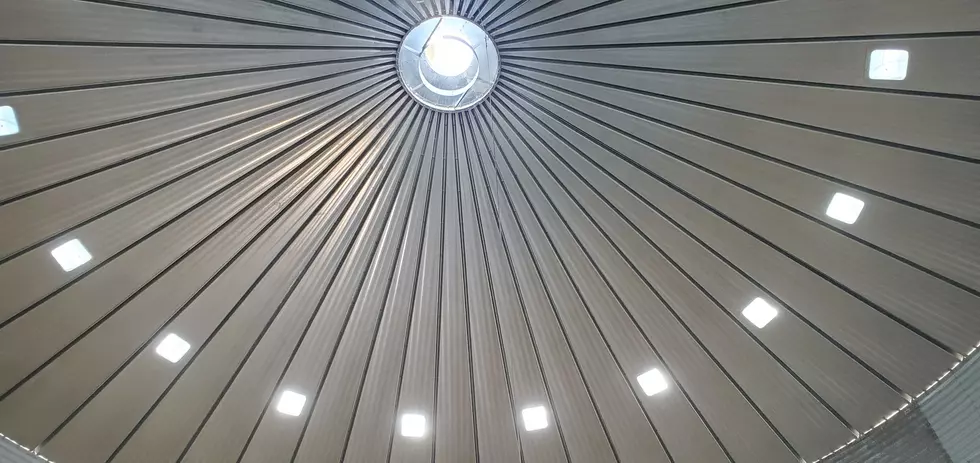
Grain Bin Technology Continues to Evolve
Drive through the country anywhere in the United States and you will most likely see them standing near a farm, or near farm ground. I'm talking about grain bins, and they have come a long way since my first recollections of them growing up on a farm in south-central South Dakota near Kennebec.
My first memory of a grain bin was a square white building just outside our house. It was so dated it had been converted into a storage place for 'stuff.' We also had several smaller bins on our farm when I was young. Again, these were probably built in the early '60s and didn't hold a lot of grain. But grain was moved with smaller trucks and augers at the time, so it worked.
Fast forward to 2020 and you see huge grain bins both on farms and situated in clusters between massive fields for ease of storage. And the technology inside one of those grain bins is way more advanced than you might think.
This past weekend I had the chance to get a closer look at some of the new technologies and features of a grain bin. Brady and Dan Soulek gave me a tour of Brady's new grain bin near Armour, South Dakota. The first thing I noticed was, it was tall. I think they said 8 rings. And it was big. If memory serves me correct it held around 40,000 bushels. They had been hauling corn out of the bin so I had a chance to look it over.
The bin we looked at was a Sioux Steel Bin from Bob's Farm Service in Armour, South Dakota. Dan mentioned that he appreciated the ads that Bob's runs on our radio stations because they helped educate both farmers and non-farmers alike. After being inside one of these newer high tech bins, I have a much greater appreciation of just that!
When I got inside I noticed a cable that hung from the middle of the bin, and along the side. Turns out they are used to take the temperature of the grain. Long story short, the grain is not entirely dry when put in a bin. Many times it could be as high as 16-22% moisture. There is some science involved too. High moisture grain and temperature variations can cause heat and in worst-case scenarios cause spoilage. Spoiled grain means lost dollars. With the cables, you can dial up the temperature of your grain, in the bin, and at various levels as well. The fans are also set to come on or turn off when temperature and humidity tell them to. The technology lets you know if you need to remove some of the grain to preserve its quality.
There was a hole where they could take a grain sample and two driers on the bin we looked at. Everything about the bin was designed to make it easier to unload and load and to better monitor the grain temperatures in the bins. And by having storage on your farm you can hold on to your grain longer if prices are low, and move the grain to market when prices rebound.
I was a little jealous when I saw that huge grain sweep that takes MOST of the grain to a hungry auger. I spent quite a few hot afternoons with a shovel helping my dad holding a drag or running a shovel.
Next time you drive by one in the field, give one a look. Better yet, ask your farmer friend to show you one. They know a lot more about them than I do. Ask some questions. If you do, you'll have a better understanding of where the grain goes, and why!

KEEP READING: 3-ingredient recipes you can make right now
More From KKRC-FM / 97.3 KKRC


![Sioux Steel is Doing Downtown Development Right Way [OPINION]](http://townsquare.media/site/484/files/2014/08/004-Raven-Cherapa-on-the-River-Pano-II.jpg?w=980&q=75)






